Some animals have teeth so bizarre, they look like they came from another planet. We’re not just talking sharp or scary—we’re talking transparent, glow-in-the-dark, fused into one giant tooth, or growing straight through their own skulls. These creatures don’t follow the usual rules. They slice, crush, grind, and gnaw in ways that leave scientists shaking their heads. From deep-sea monsters to backyard oddities, here are 17 animals with teeth so strange, they rewrite everything you thought you knew about how mouths are supposed to work.
Narwhal
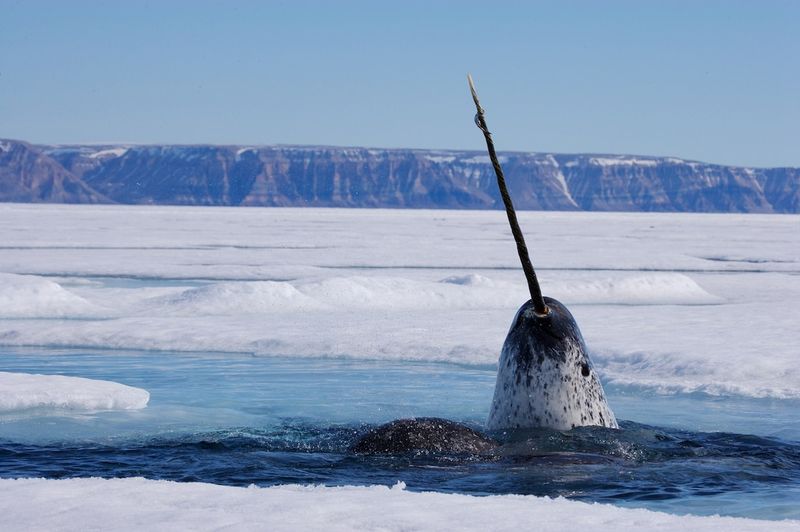
In the icy waters of the Arctic swims the narwhal, often dubbed the unicorn of the sea. Its most striking feature is a single, spiraled tusk that can grow up to 10 feet long. Interestingly, this tusk is actually an elongated tooth that protrudes from the upper jaw.
Unlike typical teeth, the narwhal’s tusk has sensory capabilities, allowing it to detect changes in the environment. This unique adaptation helps narwhals navigate and survive in their harsh habitat. The tusk’s spiral pattern adds a mystical quality, making the narwhal a true wonder of nature.
Vampire Bat
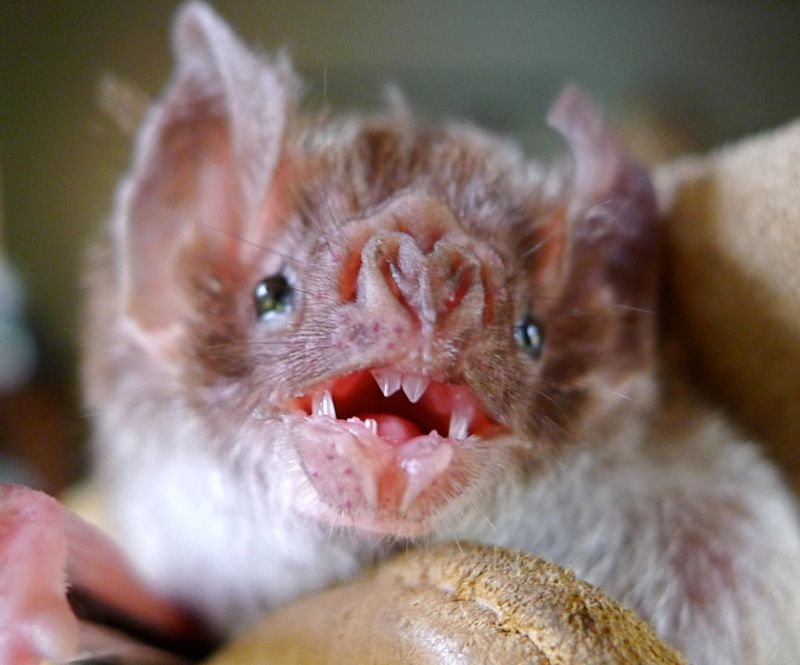
The vampire bat, with its nocturnal habits and eerie feeding technique, has captured human imagination for centuries. Its razor-sharp teeth are perfectly adapted for slicing through skin to access the blood of its prey.
These teeth are so fine that the bite is almost painless, enabling the bat to feed undetected. This adaptation is crucial for its survival, as vampire bats rely exclusively on blood for nourishment. With a wingspan that belies its small size, the vampire bat’s presence in folklore is as significant as its biological uniqueness.
Babirusa
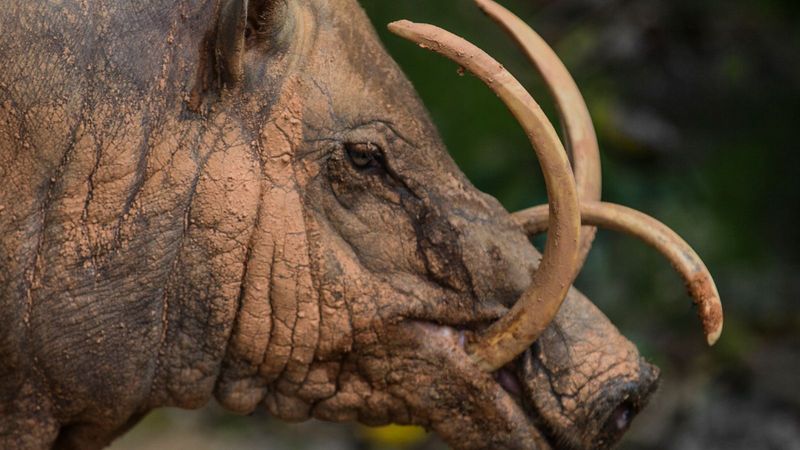
The babirusa, a wild pig native to Indonesia, sports some of the most bizarre dental features. Its upper canine teeth grow upwards, piercing through the top of the snout and curving back toward the forehead.
These tusks can grow so long that they might even penetrate the skull if not worn down. While the exact purpose of these tusks is debated, they are often thought to play a role in mating displays or combat. The babirusa’s dental display is as formidable as its dense, forested home.
Deep-Sea Anglerfish
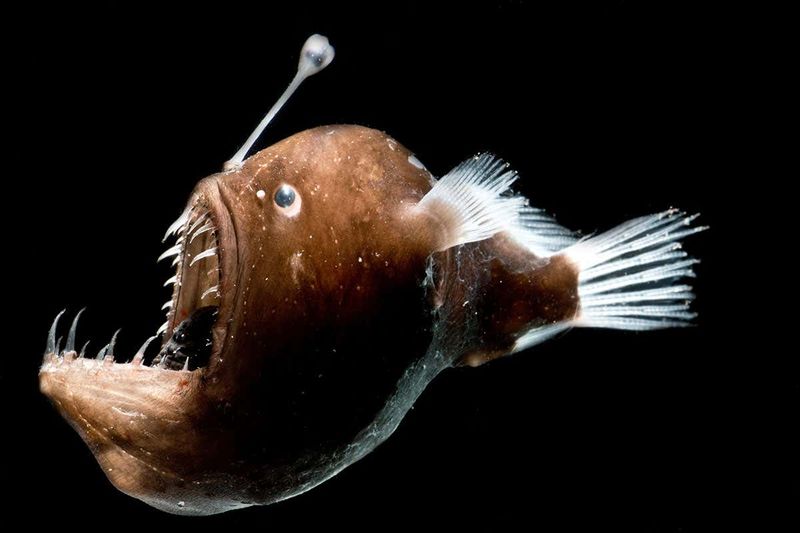
Dwelling in the dark depths of the ocean, the anglerfish is a curious creature known for its terrifying teeth and luminescent lure. Its mouth is filled with long, sharp teeth that project outward, creating a fearsome trap for prey.
The structure of these teeth allows prey to be captured effortlessly when they swim too close. These fearsome features are complemented by a glowing lure that entices unsuspecting victims toward their doom. In the shadowy underworld of the deep sea, the anglerfish’s dental arsenal serves it well.
Goblin Shark
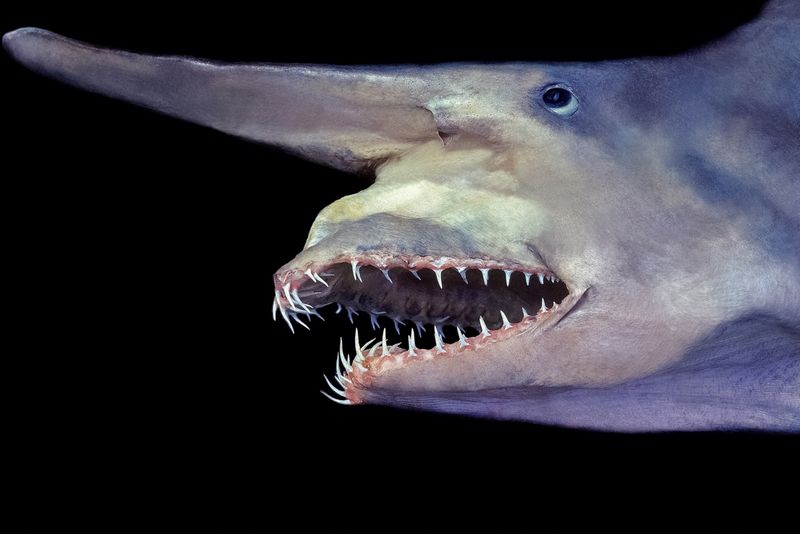
The goblin shark is sometimes called a living fossil due to its ancient lineage and distinctive looks. With a long snout and protruding jaw, it can extend its mouth to snatch prey swiftly.
Its teeth are slender and sharp, designed to grasp slippery prey like fish and squid. This unique jaw mechanism, combined with its ghastly appearance, makes the goblin shark a remarkable example of evolutionary specialization. Dwelling in deep waters, it’s rarely seen by humans, adding to its mysterious allure.
Platypus
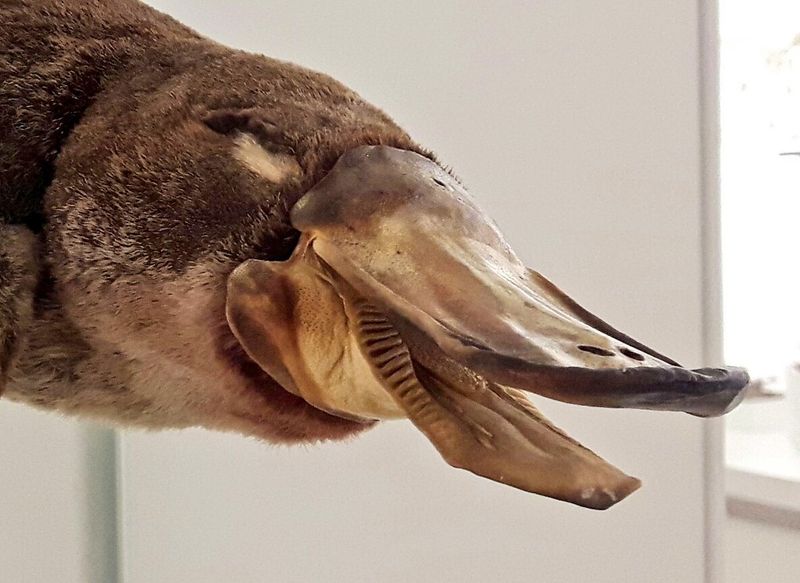
The platypus is a peculiar mammal native to Australia with a unique approach to feeding. Instead of teeth, it has grinding pads inside its bill, which it uses to crush insects and shellfish.
This adaptation is perfectly suited to its diet and aquatic lifestyle. With webbed feet and a duck-like bill, the platypus defies typical mammalian characteristics, combining traits from birds, reptiles, and mammals alike. Its dental adaptations are just one of the many traits that make this creature a true anomaly in the animal kingdom.
Vampire Squid
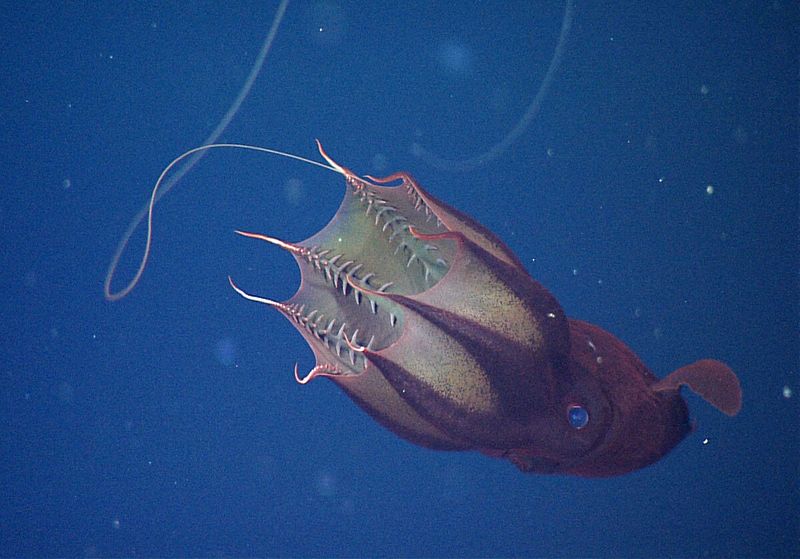
The vampire squid, residing in deep ocean waters, mesmerizes with its cloak-like webbing and luminescent allure. Unlike its name suggests, it feeds on marine detritus rather than blood.
Its beak-like mouth is adapted to capture and consume tiny particles floating in the water. This efficient method of feeding, combined with its deep-sea adaptations, makes the vampire squid a master of survival in its extreme environment. The juxtaposition of its menacing name and gentle feeding habits adds a layer of intrigue to this enigmatic creature.
Sloth
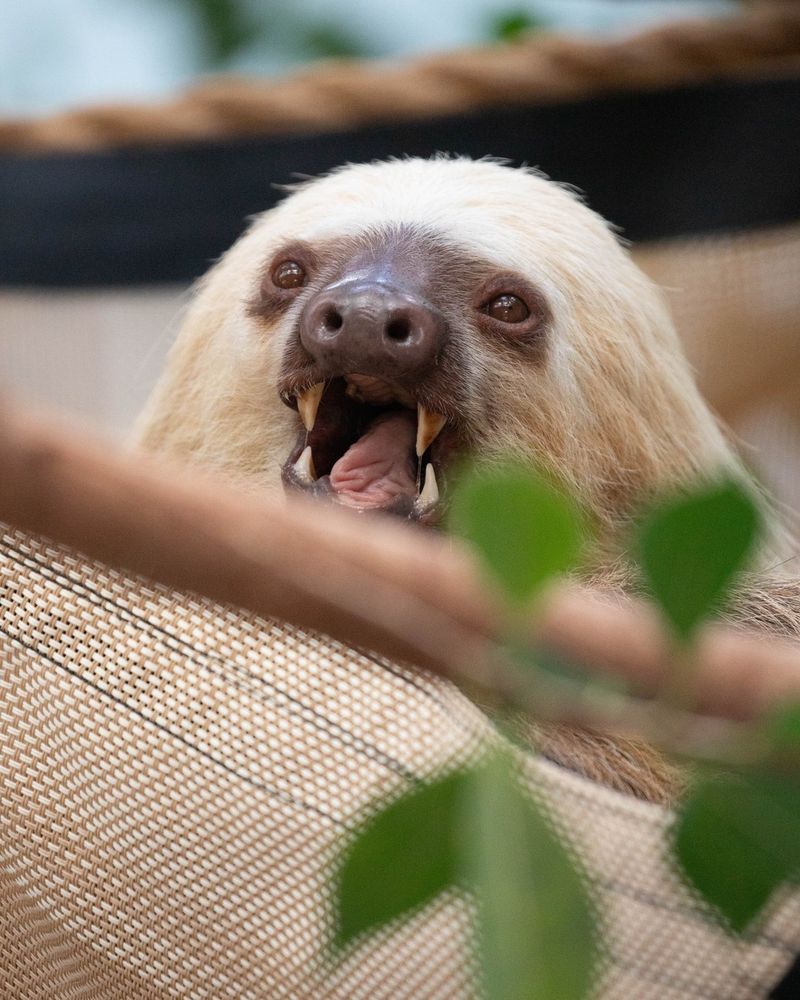
Slow and deliberate, the sloth’s teeth reflect its unique lifestyle. Unlike many mammals, sloths lack incisors and have simple, peg-like teeth that are designed for grinding leaves.
These teeth grow continuously, compensating for the wear caused by their fibrous diet. Found in Central and South American rainforests, sloths spend much of their time hanging upside down, chewing leaves with a slow, methodical rhythm. Their laid-back approach to life is mirrored in their unhurried dental evolution, making them a relaxed wonder of nature.
Greenland Shark
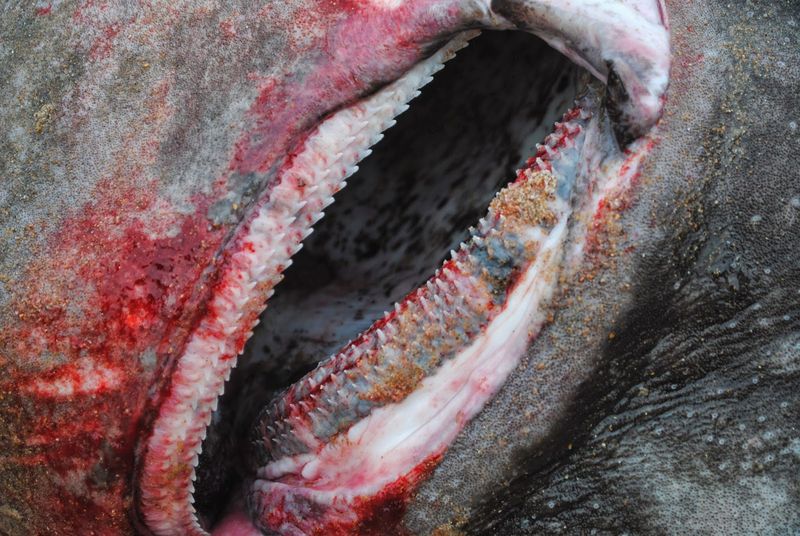
The Greenland shark, a denizen of the deep, cold waters of the North Atlantic, is a slow-moving predator with an impressive dental arrangement. Its teeth are small and jagged, perfectly suited for sawing through the flesh of its prey.
This shark’s slow metabolism and long lifespan, potentially reaching over 400 years, reflect a patient approach to survival. The Greenland shark’s teeth, like its stealthy hunting tactics, are adapted to the unforgiving environment it calls home. Its enigmatic nature adds to its status as a mysterious oceanic giant.
Proboscis Monkey
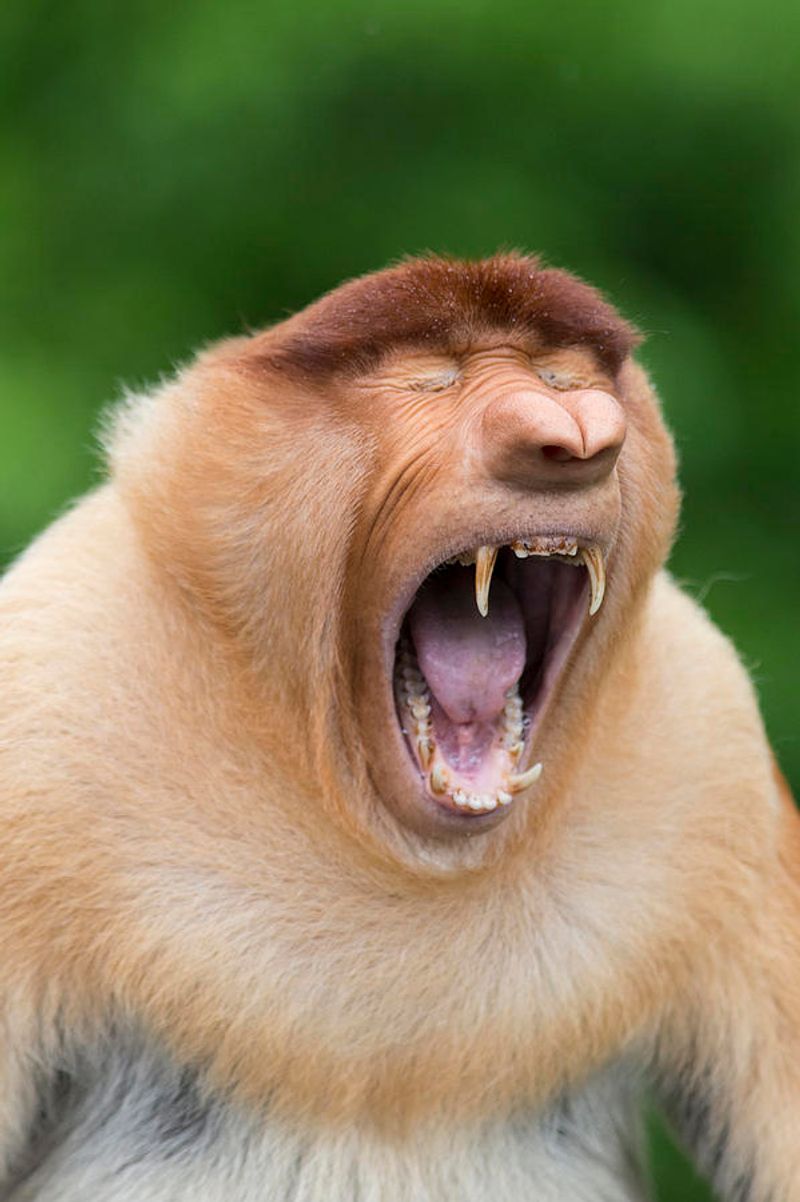
Known for its distinctive nose, the proboscis monkey also has a unique dental setup. With large, prominent teeth, it is well-equipped to chew through tough, fibrous plant material.
These monkeys spend much of their time foraging in the trees of Borneo’s rainforests. Their dental adaptations are essential for breaking down the diverse diet of leaves and fruits they consume. The combination of an unusual nose and specialized teeth makes the proboscis monkey a fascinating subject of study.
Parrotfish
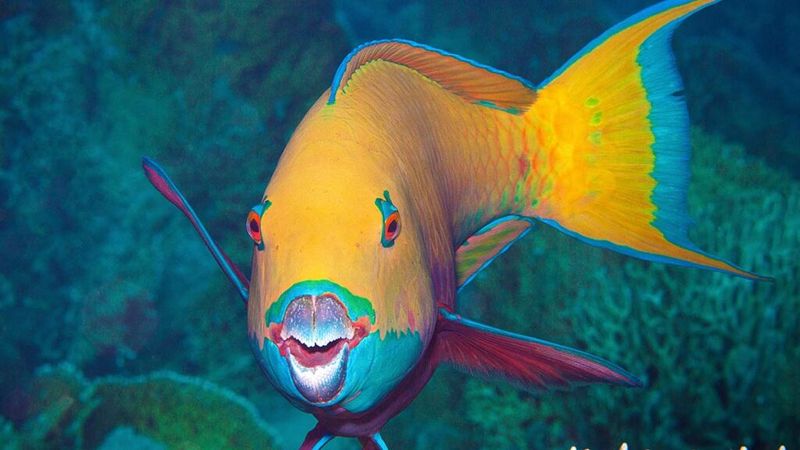
The parrotfish, with its vibrant colors and distinctive dental formation, plays a crucial role in tropical coral ecosystems. Its teeth are fused into a beak-like structure, perfect for scraping algae off coral.
This dental adaptation not only helps the parrotfish feed but also contributes to the health of coral reefs by controlling algae growth. As it feeds, the parrotfish grinds coral into sand, shaping the very environment in which it lives. Their vivid appearance is matched by their ecological significance.
Aye-Aye
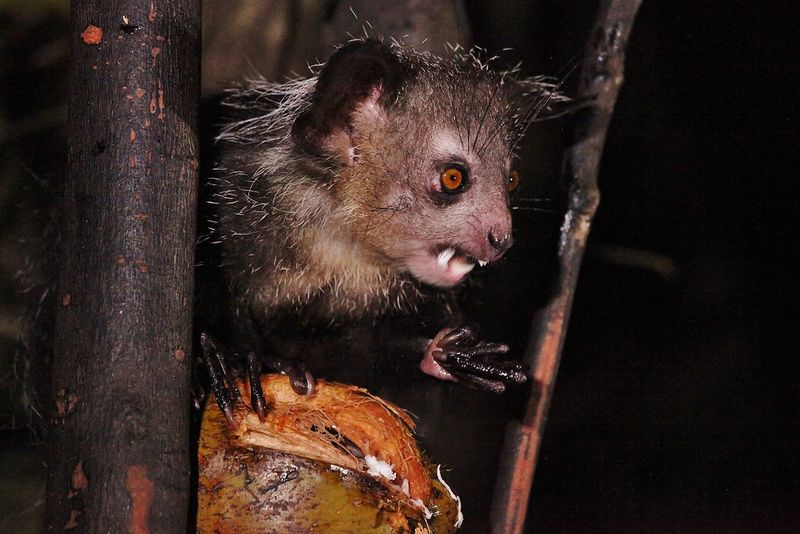
The aye-aye, a nocturnal lemur from Madagascar, is a creature of peculiar charm and mystery. Its ever-growing incisors resemble those of a rodent, allowing it to gnaw through wood to find insects.
This adaptation is complemented by an elongated finger, perfect for extracting prey from crevices. The aye-aye’s unique dental and anatomical features make it a specialist in its niche, navigating the dark forests in search of sustenance. Its combination of odd traits captivates those who encounter this elusive primate.
Dragonfish
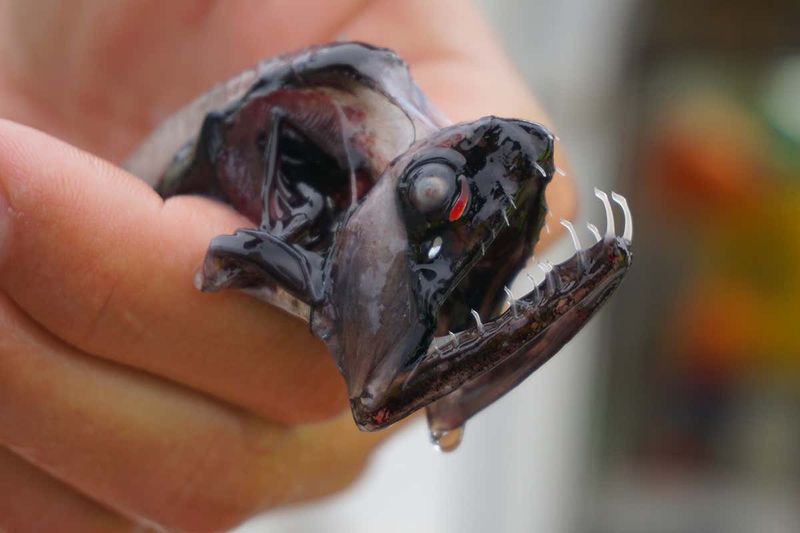
In the perpetual darkness of the ocean’s depths resides the dragonfish, a creature with a fearsome array of teeth. These needle-like structures are designed to grasp and hold onto slippery prey in the pitch-black environment.
The dragonfish’s teeth, coupled with its bioluminescent lure, create a formidable hunting strategy. This adaptation is essential for survival in a realm where light is scarce and competition fierce. The dragonfish’s eerie appearance and unique adaptations make it a fascinating subject of marine biology exploration.
Tarsier
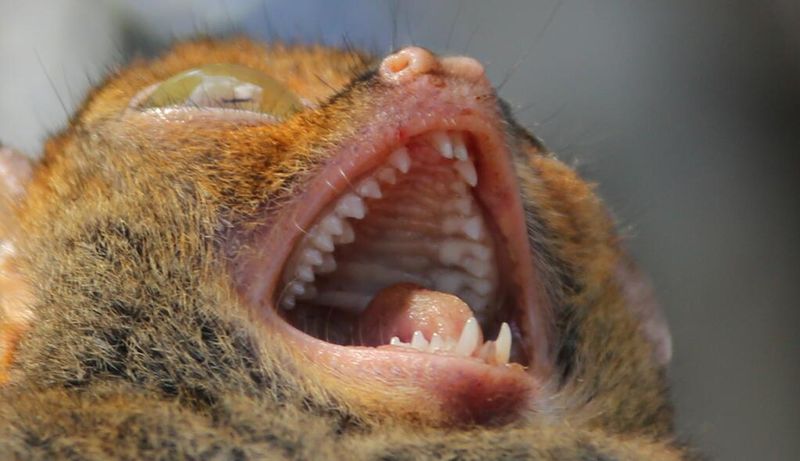
With eyes as large as its brain, the Tarsier is a nocturnal marvel. Its teeth, sharp and needle-like, are essential for its diet of insects and small vertebrates. Found in the dense rainforests of Southeast Asia, tarsiers use their unique dental structure to pierce and hold onto prey.
Not only do their teeth aid in eating, but they also play a role in grooming. Their elongated fingers complement their dental prowess, enabling them to maintain a pristine coat. Evolution has equipped this tiny primate with a dental toolkit tailored for survival in its niche habitat.
Pacu Fish
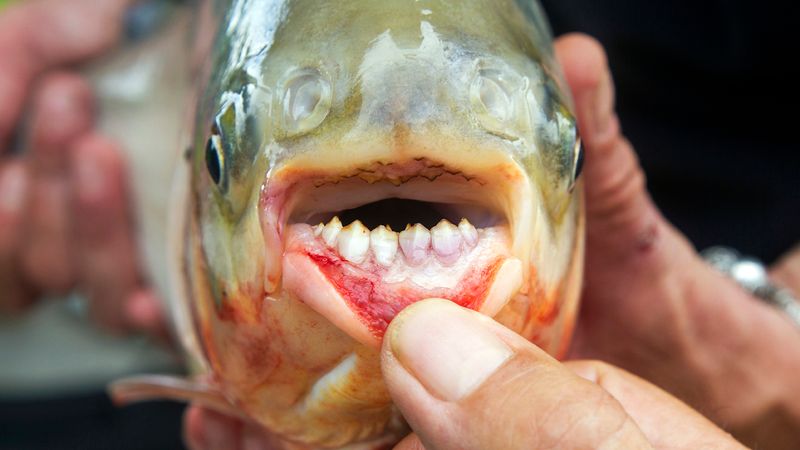
Imagine a fish with a smile eerily similar to a human’s. The Pacu Fish, native to the rivers of the Amazon, has teeth that resemble our own incisors. This unusual adaptation helps the fish crack nuts and seeds that fall into the water.
The Pacu’s dental structure is critical for its diet and survival in the diverse river ecosystem. Its teeth are not just for show; they are vital tools in navigating the challenges of its aquatic environment. In some regions, tales of the Pacu’s biting prowess are legendary, adding to its enigmatic reputation.
Crabeater Seal
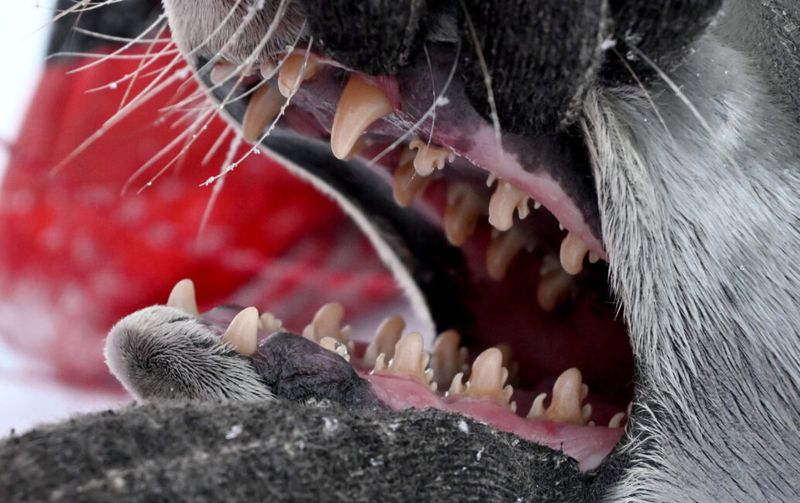
Crabeater seals are perfectly adapted to life in the icy waters of Antarctica. Despite their name, they don’t eat crabs. Instead, they have evolved a unique dental structure for filtering krill. Their teeth interlock to create a sieve-like effect.
This adaptation allows them to capture tiny krill efficiently. When they close their mouths, water is forced out, trapping the krill inside. It’s a fascinating example of evolution tailoring a species to its environment.
Did you know? Crabeater seals are one of the most numerous large mammals on Earth, with a population estimated at around 15 million.
Tufted Deer
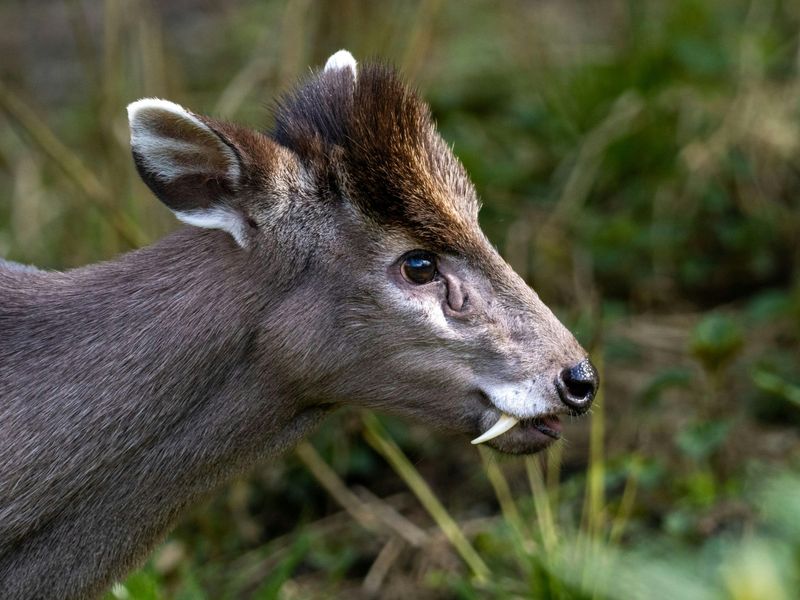
The tufted deer, native to the forests of China, is a creature of contrasts. It sports a distinctive tuft of black hair on its forehead, but what truly sets it apart are its fang-like canine teeth. These fangs can grow remarkably long.
Unlike other deer, these teeth are not for eating but are used during mating season. Males often display them to establish dominance or attract mates.
This quirky dental feature gives the tufted deer a somewhat fierce appearance, despite its small and timid nature. It’s an extraordinary blend of beauty and peculiarity.

